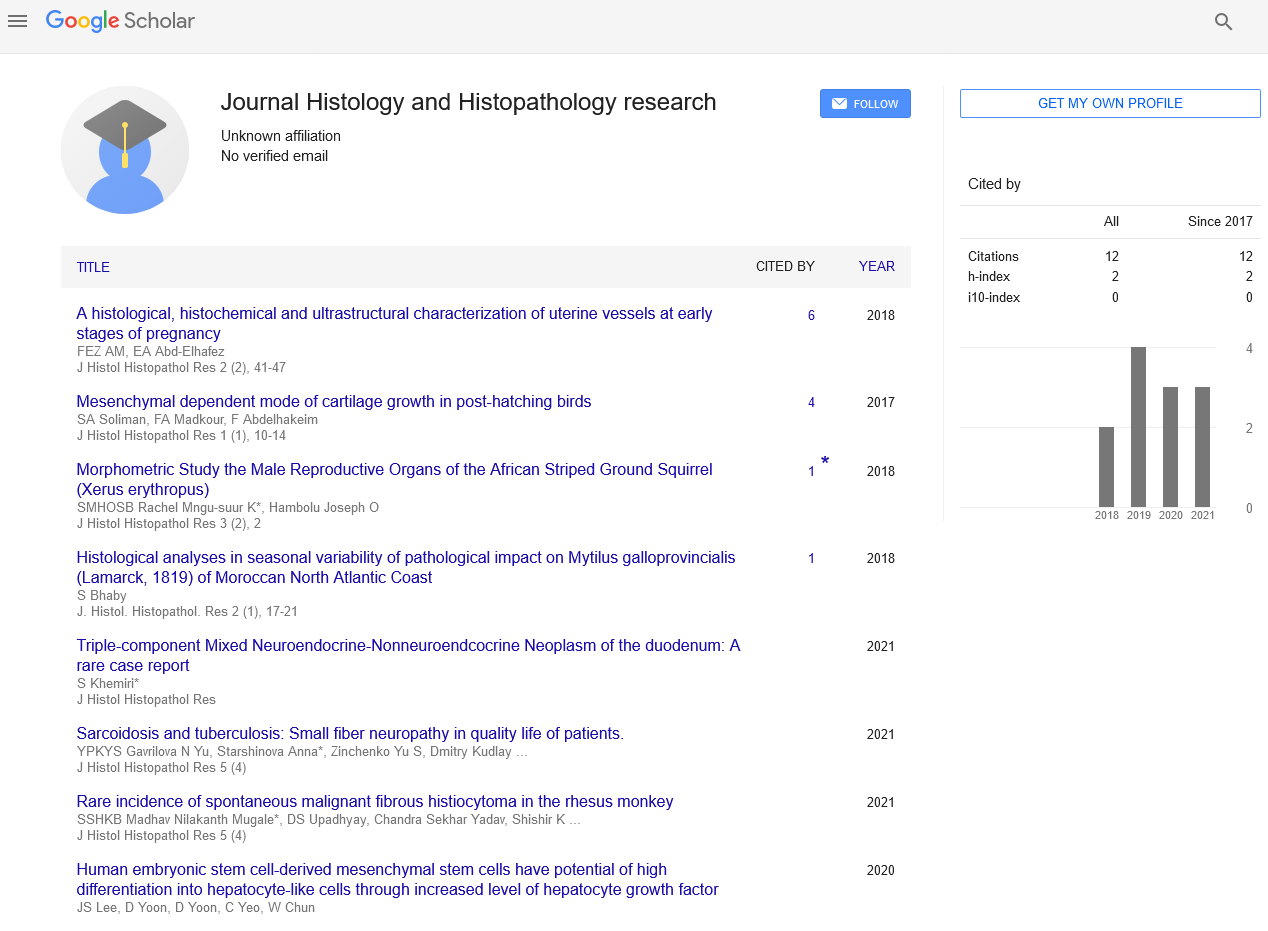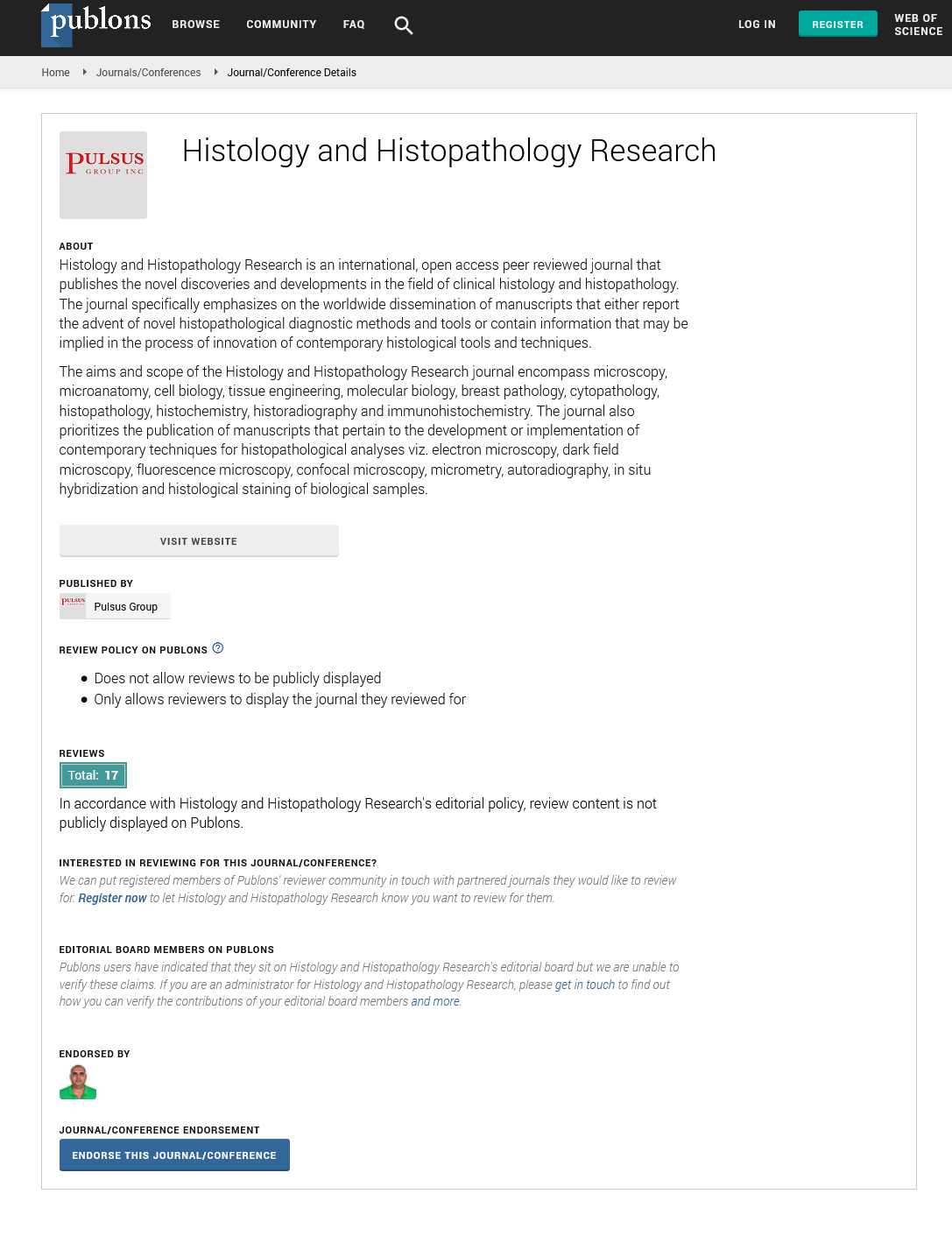An assessment of the thyroid cytopathology reporting system used in Bethesda
Received: 02-Jul-2022, Manuscript No. pulhhr-22-5551 ; Editor assigned: 04-Jul-2022, Pre QC No. pulhhr-22-5551 (PQ); Accepted Date: Jul 19, 2022; Reviewed: 14-Jul-2022 QC No. pulhhr-22-5551 (Q); Revised: 16-Jul-2022, Manuscript No. pulhhr-22-5551 (R); Published: 25-Jul-2022, DOI: 10.37532. pulhhr.22. 6 (4).87-88
Citation: Wells N. An assessment of the Thyroid Cytopathology Reporting System Used in Bethesda. J Histol Histopathol Res. 2022;6(4):87-88.
This open-access article is distributed under the terms of the Creative Commons Attribution Non-Commercial License (CC BY-NC) (http://creativecommons.org/licenses/by-nc/4.0/), which permits reuse, distribution and reproduction of the article, provided that the original work is properly cited and the reuse is restricted to noncommercial purposes. For commercial reuse, contact reprints@pulsus.com
Abstract
Ultrasound may identify thyroid nodules in up to 60% of the general population, which is a frequent condition. The increased diagnosis of tiny papillary carcinomas is most likely to blame for the global rise in differentiated thyroid cancer prevalence, according to data from the Surveillance Epidemiology and End Results (SEER) registry. Thyroid Fine-Needle Aspiration (FNA) has shown to be a quick, affordable, safe, and reliable form of inquiry for the first examination of individuals with such lesions. Additionally, this treatment is the best diagnostic tool for determining if a patient needs clinical therapy or surgical excision. An increase in cytological diagnostic methods has been caused by the rising incidence of thyroid cancer and advancements in the technology and resolution of ultrasound equipment.
Introduction
The standardisation of diagnostic nomenclature for the reporting of thyroid cytopathology results was one of the goals of a conference conducted in Bethesda, Maryland, in 2007. The Bethesda System for Reporting Thyroid Cytopathology (TBSRTC) was established as a result of the suggestions made at this meeting. Numerous articles show that this categorization system has been successful in achieving its goal of standardising thyroid-reporting cytopathology. In addition, due to variations in its use among institutions and follow-up, the category of follicular lesion/atypia of unclear importance continues to be the most contentious. This is because it is so difficult for cytopathologists to agree on specific morphologic criteria for atypia diagnosis.
It has been demonstrated that comparing the result data before and after the deployment of TBSRTC is the most effective strategy to introduce TBSRTC into a pathology laboratory and persuade doctors of its validity and robustness. When the results from other institutions were compared, it became clear that there were significant variations in the number of patients who underwent surgery and the likelihood of developing cancer for various diagnostic categories (DCs). Thus, four years into the TBSRTC, the issue that has to be answered is whether the categorization system has achieved its goals of improving thyroid FNA cytopathologic interpretation and thyroid nodule care.
We conducted a thorough meta-analysis of thyroid FNA studies utilising TBSRTC in this study to evaluate the variation in the usage of the 6 DCs between various institutions with the goal of examining the reliability of this reporting method in light of histological outcomes. up. Each group was connected to an estimated range of malignancy risk, which was a crucial aspect of the Bethesda classification system. The follow-up care of patients with thyroid nodules benefited from the correlation between diagnostic category and risk of cancer. Following an extensive literature search, the risk of malignancy for each diagnostic category of the TBSRTC was determined and was based on recognised histopathologic diagnostic categories. For the purpose of calculating the likelihood of malignancy, the entity follicular variant of papillary thyroid cancer, encompassing both its invasive and noninvasive variants, was categorised as malignant. Since the release of TBSRTC, many experts now consider This reevaluation was made based on much experience, which indicated the that encapsulated/non-invasive forms of follicular type of papillary thyroid cancer were unlikely to spread and typically behaved in a benign manner. The term "non-invasive follicular thyroid tumour with papillary-like nuclear characteristics" has been used to describe this subset of follicularderived neoplasms (NIFTP). With the substantial number of neoplasms that have been moved from the histologically malignant category to the histologically benign category, a shift in the malignancy risk for the TBSRTC diagnostic categories is about to occur. The authors examined the changes in the malignancy risk for the cytopathologic diagnostic categories as a result of changes in the histopathologic classification of some non-invasive follicular variant papillary thyroid carcinomas as "benign" in order to assess the nature and magnitude of this potential shift in malignancy risk. benign rather than malignant the non-invasive types of thyroid carcinomas.
The thyroid gland's fine-needle aspiration (FNA) has shown to be a useful method for assessing individuals with thyroid nodules. It has been used for more than 50 years and was first promoted in Sweden. However, it wasn't until the late 1970s that its use was promoted in the United States. Institutions developed their own cytologic diagnostic categories without consensus among reports to differentiate patients who need surgery from those who don't. The Papanicolaou Society of Cytopathology proposed guidelines and 10 diagnostic groups for the cytologic interpretation of thyroid FNA in 1996. The National Cancer Institute hosted the NCI Thyroid Fine Needle Aspiration State of the Science Conference in 2007. Institutions evaluated their experiences with thyroid FNA to determine its usefulness and predictive value formalignancy. Thyroid fine-needle aspiration has made several recent advancements (FNA). The capacity to acquire diagnostic data has increased with the use of ultrasound guiding. The discovery of incidental nodules has risen as a result of improved imaging methods and greater surveillance for nonthyroid cancers. The Bethesda System for Reporting Thyroid Cytopathology (TBSRTC), launched in 2009 and subsequently widely used, offers standardised diagnostic nomenclature. According to the information that was available at the time, TBSRTC presented an estimated risk of malignancy (ROM) for each cytology diagnostic category, and these were utilised to construct treatment guidelines for each category. The American Thyroid Association modified its guidelines for treating thyroid nodules in 2015 and supported TBSRTC for this purpose. It is still difficult to decide what treatment is best for indeterminate nodules, also known as atypia of unknown significance, follicular lesion of unclear importance, and suggestive for follicular neoplasm/follicular neoplasm (SFN/FN). It has become commonplace to molecularly examine thyroid nodule aspirate to aid in preoperative planning. The management of thyroid nodules still faces significant hurdles due to molecular profiling's limitations, unneeded surgery, and the resulting morbidity.






